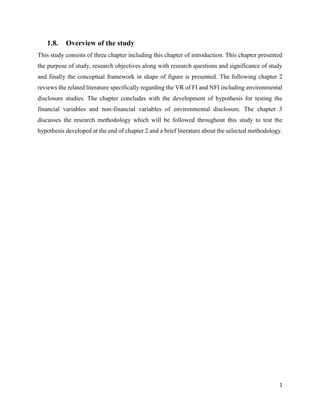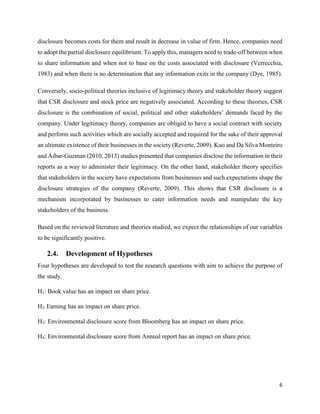The document discusses a thesis proposal that aims to examine the value relevance of financial information and environmental disclosure for non-financial sector companies in Pakistan. The study will use a sample of 255 companies over 10 years, applying a panel data approach and regression analysis. The study expects to find that both financial information like earnings per share and book value per share, as well as non-financial environmental disclosure information, are value relevant for valuing companies in the non-financial sector of Pakistan.

































